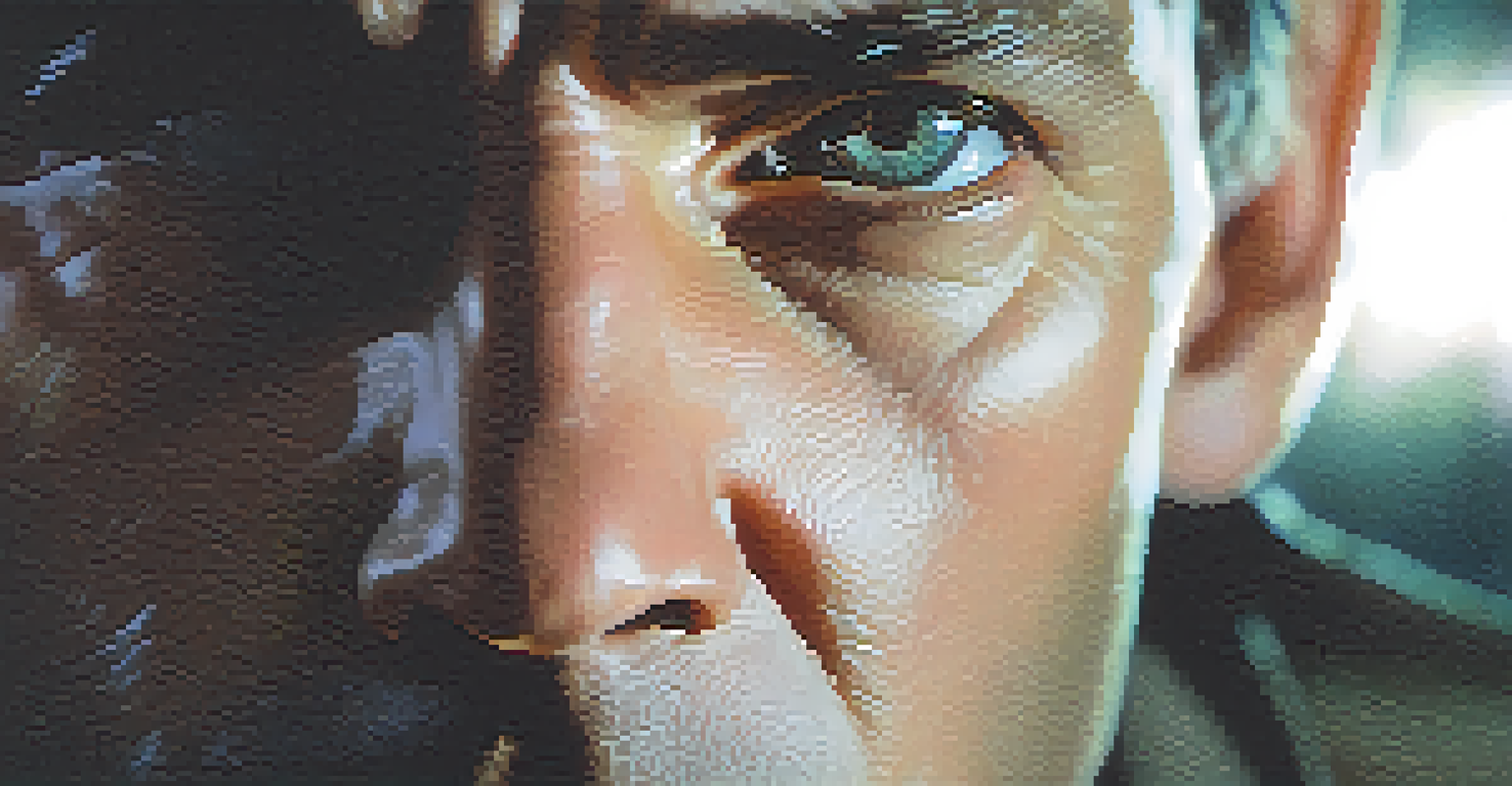Key Elements of Effective Film Trailers: What Works and Why

Understanding the Purpose of a Film Trailer
At its core, a film trailer serves as a tantalizing preview of what’s to come. It’s not just about showcasing scenes; it’s about sparking curiosity and excitement in potential viewers. By capturing the essence of the film, trailers play a crucial role in marketing and audience engagement.
A trailer is a promise of what is to come; it is an invitation to experience the story in full.
Think of a trailer as a first date: it's your chance to make a lasting impression. A well-crafted trailer should convey the film’s tone, genre, and major themes, all while leaving viewers wanting more. It’s this balance that makes a trailer effective and keeps the audience intrigued.
Ultimately, a trailer’s purpose is to entice viewers to watch the full film. When done right, it creates a buzz that can lead to increased ticket sales and a broader audience, demonstrating the trailer's importance in the film's overall success.
The Art of Storytelling in Trailers
Every effective trailer tells a story, even if it’s just a snippet of the larger narrative. This condensed storytelling should introduce key characters and hint at their journeys without revealing too much. An engaging story arc can hook viewers’ interest right away.

For instance, consider how a trailer might start with a dramatic moment that sets the stakes. By following that with glimpses of character development and conflict, it creates an emotional connection. The viewer feels compelled to learn more about the characters and their struggles.
Trailers Spark Viewer Excitement
A film trailer serves to create curiosity and anticipation, enticing potential viewers to watch the full movie.
In essence, great trailers understand that they are telling a story in a limited timeframe. They weave together visuals, dialogue, and music to create a narrative that resonates with audiences, leaving them eager for the full experience.
Captivating Visuals: The Power of Imagery
Visuals are the heart of any film trailer. Striking images, vibrant colors, and dynamic shots can create an immediate emotional response from the audience. A trailer that uses strong visuals effectively can make even an average film seem exciting and compelling.
In the world of film, a trailer is often the first impression, and first impressions matter.
Take, for example, the use of slow-motion or close-ups during intense scenes. These techniques draw viewers in, making them feel like they're part of the action. The right visuals can also highlight a film's unique style or special effects, setting it apart from others.
Ultimately, captivating visuals not only grab attention but also enhance the storytelling aspect. They help convey the film’s mood and themes, making it easier for viewers to connect with the story before they even step into the theater.
Sound Design: Music and Other Elements
Sound design is a crucial yet often overlooked element of effective trailers. The right background music can elevate the emotional impact, guiding the audience's feelings and reactions throughout the trailer. A powerful score can linger in the mind long after viewing, making it memorable.
Consider how trailers often use crescendos and dramatic pauses to build tension. The use of sound effects, such as explosions or whispers, can also amplify the visuals, creating a full-bodied experience. Together, these elements work in harmony to enhance the storytelling.
Visuals Enhance Storytelling Impact
Captivating visuals in trailers not only grab attention but also convey the film’s mood and themes, connecting audiences to the narrative.
In short, sound design in trailers is an art form. It not only complements the visuals but also plays a significant role in shaping the audience's experience, making them more likely to remember and discuss the film.
Effective Use of Editing and Pacing
Editing is where the magic happens in a trailer, transforming individual clips into a cohesive narrative. Good pacing is essential; it can build anticipation or create excitement, guiding viewers through the story while keeping them engaged. Too slow, and you risk losing interest; too fast, and the audience may miss key elements.
A great example is the use of quick cuts during action-packed scenes, which can create an adrenaline rush. Conversely, slower cuts can emphasize emotional moments, allowing viewers to connect with the characters on a deeper level. This balance is crucial for maintaining viewer interest.
Ultimately, the editing process shapes the trailer’s overall flow. When done with precision, it not only showcases the film but also delivers a powerful emotional punch, making the audience eager to see the full feature.
Highlighting Unique Selling Points
Every film has something unique to offer, and a great trailer knows how to highlight these unique selling points. Whether it's a star-studded cast, breathtaking visuals, or a groundbreaking storyline, showcasing what sets the film apart can be the key to attracting audiences.
For example, if a film features stunning cinematography or a groundbreaking special effect, the trailer should showcase these elements prominently. This not only creates buzz but also positions the film as a must-see in a crowded market.
Effective Editing Keeps Engagement
Good editing and pacing in trailers build anticipation, ensuring that viewers remain engaged and eager to see the complete film.
In essence, by focusing on unique selling points, trailers can capture the attention of specific audiences. This targeted approach helps ensure that the film reaches those most likely to enjoy it, increasing the chances of box office success.
Creating a Call to Action in Trailers
A successful trailer often ends with a clear call to action, prompting viewers to watch the full film. This can be a simple yet effective phrase like 'Coming Soon' or 'In Theaters This Friday.' It’s a way to create urgency and excitement, motivating audiences to make plans to see the film.
Consider how some trailers include a countdown or release date at the end. This not only reinforces the excitement but also helps viewers remember when to catch the film. By creating a sense of urgency, trailers can effectively convert interest into action.

Ultimately, a well-placed call to action is a crucial element of a trailer. It not only invites viewers into the experience but also serves as a reminder of the film's upcoming release, ensuring it stays on their radar.